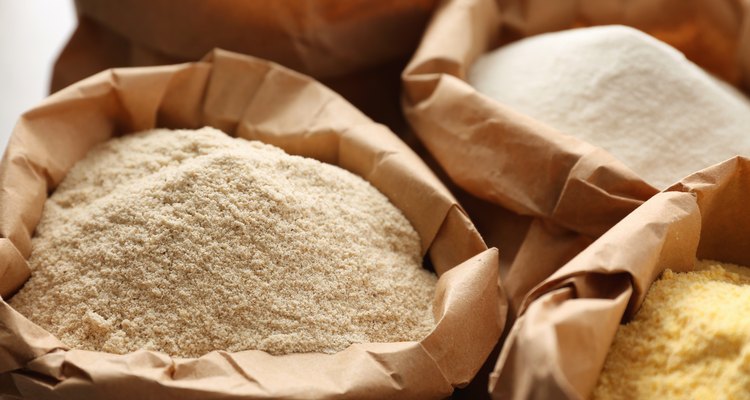
belchonock/iStock/GettyImages
Whether you are following a gluten-free diet or simply looking to shake up your baking routine, using alternative flours such as almond, rice and coconut is a great way to create delicious, gluten-free baked goods. Each type of flour has its own set of benefits and characteristics that you should understand before you bake with one or more of them. You can use almond, rice and coconut flours alone or together as part of a mix to bake cookies, cakes and more.
Almond Flour
If you want to add a buttery, rich sweetness without a gritty texture, consider using almond flour, which is reputed to be as easy to use as traditional, wheat-based flour since it doesn't require as many supplemental ingredients as some other gluten-free flours, which need to be mixed with a binder such as cornstarch or xanthan gum. You will get an ideal texture and flavor by mixing almond flour with other flours. Use a mixture of roughly 25 percent almond flour in baking mixes, or if you're baking cakes with eggs in them, use a mixture made up of 50 percent almond flour or more. Make your own almond flour by grinding blanched almonds in a coffee grinder, grinding them finely without creating almond butter.
Rice Flour
Rice flour is one of the most frequently used types of gluten-free flours. It can be dense and heavy, imparting a gritty texture to baked goods if you use too much of it. There are several different types of rice flour, including brown rice flour, which has more fiber since it is minimally processed. It also has protein, niacin, thiamine, calcium and riboflavin. Sweet rice flour is made from short grain rice with a higher starch content and is frequently used in breads, pastas or baking mixes. White rice flour contains fewer nutrients since it is more heavily processed. Rice flour works best when it is combined with high protein flours, such as almond flour, which help balance texture and flavor.
Coconut Flour
If you're looking for a low-carbohydrate option, coconut flour could be the perfect choice. It is high in fiber and has a slightly sweet, coconut flavor. It is also a good option for people that have food allergies, since it is typically well tolerated. You can bake with all coconut flour, as many people on low-carb diets do, or use it as part of a mixture with other flours, such as rice or almond. If you use a large percentage of coconut flour for baking, you may need to add extra eggs to your recipe to help combat its density, giving you an airier result.
Considerations
When you're baking with gluten-free flours, you may need to add extra ingredients to keep your baked goods from being too dry or crumbly. Increase the moisture content in your recipe by adding an extra egg, oil or gelatin to the mix and replacing white sugar with brown, which increases moisture more effectively. Another way to achieve an ideal texture and consistency is to use a combination of almond, rice and coconut flours, instead of using just one type of flour.
Related Articles
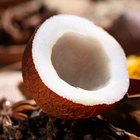
How to Cook With Coconut Flour for Main ...

The Nutrition in Coconut Powder
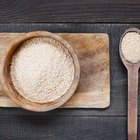
Substitutes for Oat Bran
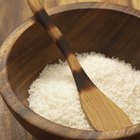
Can I Substitute Unsweetened Coconut ...

Whole Wheat Pastry: Flour Substitutions

Vegan Coconut Macaroons

Can You Use Konjac Flour in Baking?

Can You Make Scones With Coconut Flour?

How to Cook Coconut-Crusted Tilapia ...

How Do Different Types of Flour Affect ...

Role of Xanthan Gum in Vegan Baking

How to Bake Chicken With Almond Flour
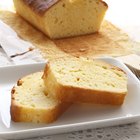
What Kind of Flour Do You Use for a ...

Can I Make Boxed Devil's Food Cake Mix ...

What Can Be Used Instead of Eggs for ...
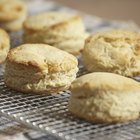
Butter Substitute for Baking Scones
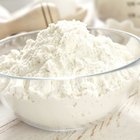
How to Use Millet Flour

Baking With Almond, Rice & Coconut Flour
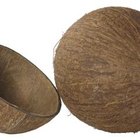
How to Store Coconut Macaroons After ...

How to Replace Ingredients to Make ...
References
- The Gluten-Free Almond Flour Cookbook; Elana Amsterdam
- Gluten-Free Makeovers; Beth Hillson
- The Best Ever Wheat and Gluten-Free Baking Book; Mary Ann Wenniger
Writer Bio
Caryn Anderson combines extensive behind-the-scenes writing experience with her passion for all things food, fashion, garden and travel. Bitten by the travel bug at the age of 15 after a trip to Europe, Anderson fostered her love of style and fashion while living in New York City and earning her degree at New York University.